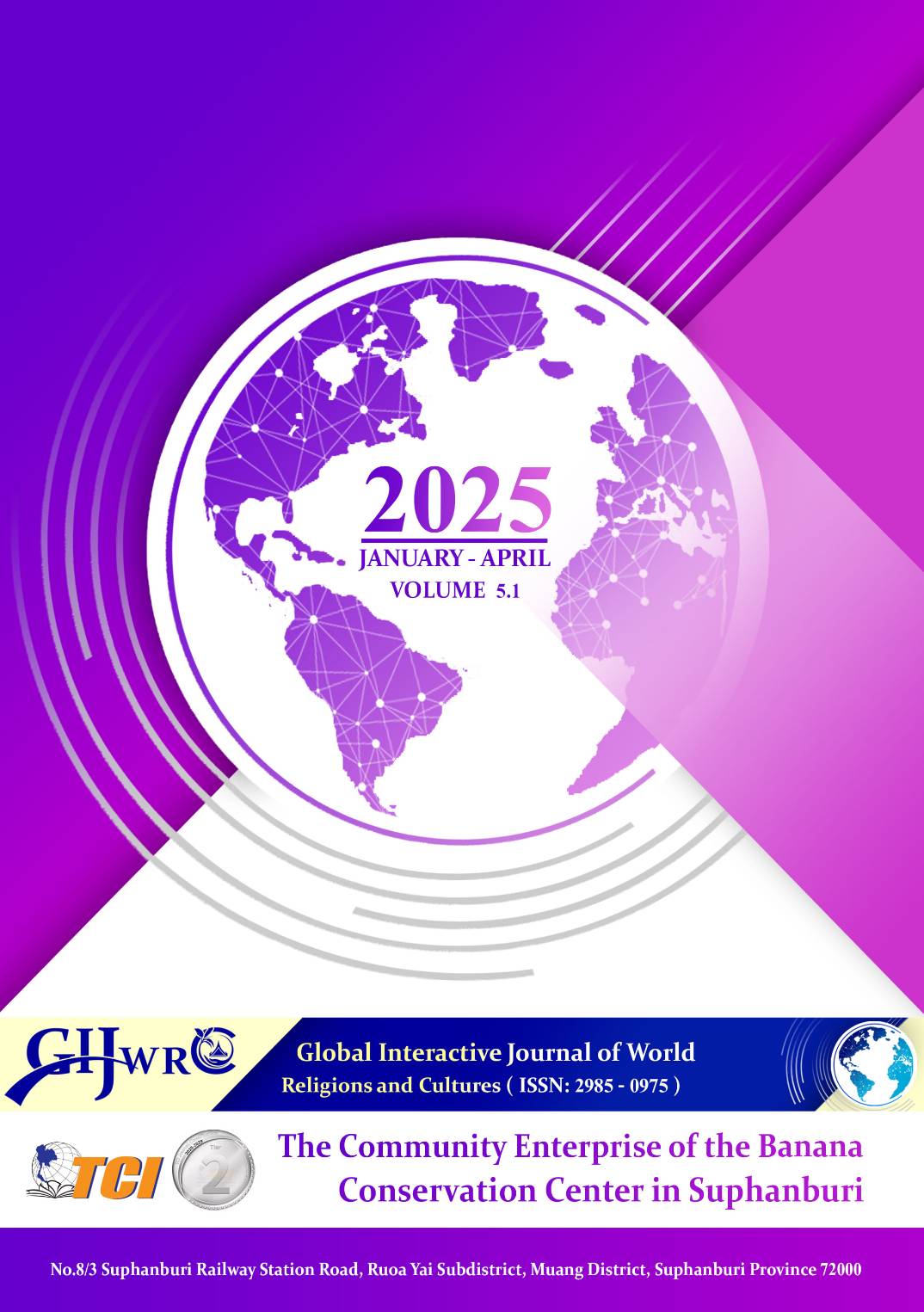SURVEYING ON TEACHING METHOD OF K-POP SINGING IN THE KOREAN ART TEACHING AT BEIJING
Main Article Content
Abstract
Beijing's K-Pop singing education is evolving within the context of Chinese culture, where traditional values, religious influences, and deep-rooted Chinese traditions shape artistic expression and pedagogy. This study explores how these cultural elements interact with the modern, technology-driven approach to K-Pop vocal training, creating a unique blend of discipline, creativity, and industry-driven education. This research objective was to surveying on teaching method of K-pop singing in the art of teaching Korean in Beijing. This research is qualitative. The research tools consist of interview forms conducted by five popular singing teachers. Conduct interviews with five key information who passed the verification process. Data collected between December 2024; three popular singing schools conducted interviews using a main point guideline. Analyze the curriculum and instructional methods suited to Chinese students.
The research findings were Beijing’s K-Pop singing education integrates industry partnerships and advanced technology, such as AI and multimedia tools, to enhance training and career opportunities. Teaching methods balance Western discipline with K-Pop’s emphasis on creativity and emotional expression, adapting to cultural influences and student needs. The expansion of specialized programs, online lessons, and performance opportunities reflects the growing demand for structured K-Pop vocal training.
Article Details
References
Ahn, J. (2014). The New Korean Wave in China: Chinese Users' Use of Korean Popular Culture via the Internet. International Journal of Contents, 10(3), pp. 47-54.
Chae, S. (2023). A study on K-POP and curriculum in technical colleges. Culture and Convergence, 45(9), pp. 827-838.
Choi, H. (2023). The Korean Wave: From global consumption to global creation. Societes, 161(3), pp. 137-145.
Jeong, W. (2023). Research on the Development Plan of China's Pop Music(C-Pop) Industry through a Comparative Analysis with K-Pop. doi: 10.29279/jitr., Pp.28.1.91
Kim, J. H., Kim, K. J., Park, B. T., & Choi, H. J. (2022). The phenomenon and development of K-Pop: the relationship between success factors of K-Pop and the national image, social network service citizenship behavior, and tourist behavioral intention. Sustainability, 14 (6), 3200.
Kislyakova, Y. N., & Liu, B. (2023). Peculiarities of vocal pedagogical culture formation in future music teachers in China’s higher education system. Samara Journal of Science, 12(2), pp. 262-265.
Li, W. (2023). The K-POP Phenomenon: Analyzing Success Secrets of SM Entertainment in Global Fandom. Advances in Economics, Management and Political Sciences, (9), pp. 350-355.
Lopes, P., Oh, I., & Pyun, L. (2023). The globalization of postcolonial pop music: putting the success of the K-pop industries into theoretical perspectives. Asia Pacific Business Review, 29 (5), 1243-1250.
Park, S. (2021). In the Shadow of the Korean Wave: The Political Factors of the Korean Wave in China. In Proceedings of Topical Issues in International Political Geography (pp. 355-371). Springer International Publishing.
Sun, M. (2020). K-pop fan labor and an alternative creative industry: A case study of GOT7 Chinese fans. doi: 10.1177/2059436420954588
Sun, M., & Liew, K. K. (2019). Analog Hallyu: historicizing K-pop formations in China. Global media and China, 4(4), pp. 419-436.
Zhou, B. (2023). The sense of place: Chinese K-pop fans' nationalist sentiment performance on social media. In National Identity and Millennials in Northeast Asia (pp. 71-87). Routledge.


